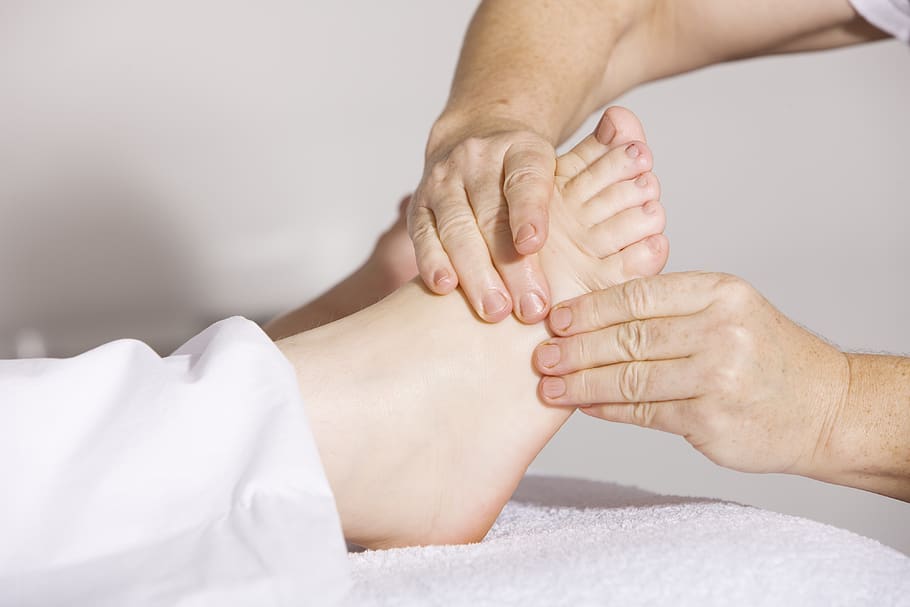Plantar Plate Tear vs Neuroma

One of the most common foot problems people experience is pain in the ball of the foot. This annoying and sometimes debilitating condition can negatively impact a person’s quality of life. In most cases, this forefoot pain is the result of either Morton’s Neuroma or Plantar Plate Trauma like a Plantar Plate Tear. Read on to learn about these conditions:
What is Neuroma (Morton’s Neuroma)?
This condition is a nerve injury caused by the metatarsal bones rubbing together, resulting in swelling and irritation. The damaged nerves thicken over time, which causes a burning sensation along with stabbing, shooting pain.
Symptoms
The following are some of the most common symptoms associated with Neuroma:
- Shooting, sharp pain in the ball of the foot. This is usually noted between the third and fourth toes.
- Toes that tingle or feel numb.
- A burning pain in the ball of the foot that can spread or shoot down to the toes.
- Pain is worsened when sufferers wear high heels or tight shoes.
Causes
As mentioned above, this condition is caused when the metatarsal bones rub together, which leads to swelling and irritation which encroaches on the nerves, causing injury.
Treatments
The treatment options will vary based on the severity of the symptoms of neuroma. However, in most cases, they include the following:
- Rehabilitation of soft tissue through massage can relieve some of the pain associated with this condition.
- Wearing shoes that are wide enough in the forefront, and make sure they are not tight.
- Injections of cortisone or prolotherapy to reduce inflammation in the area.
- Wearing soft cushioned orthotics, featuring a metatarsal dome can take the pressure off the nerve.
- Surgical measures will only be employed if none of the less invasive treatments are unsuccessful.
What is a Plantar Plate Tear?
A Plantar Plate Tear presents the beginning of a hammered or clawed toe. It is caused by an injury to the cartilage and ligaments that are attached to the base of or between the toe bones.
Symptoms
The following are the most common symptoms of this condition:
- A “V” sign is made when the toes separate into a V-shape.
- Sharp pain or a dull ache under the ball of the foot.
- Feeling as if there is a small stone in the shoe.
- Thickened or enlarged toe, sometimes described as sausage-like.
- Feeling like there is inadequate cushioning between the ground and the toe bones.
- The development of calluses developing under the metatarsal heads.
Causes
As mentioned above, this is often caused by an injury to the area, negatively impacting the cartilage and ligaments that attach the base of and between the toe bones. Injuries can involve ruptures, tears, or distentions.
Treatments
The following conservative measures are most effective when utilized within the first 6 to 12 months of the condition:
- Wearing stiff-soled or firm shoes help reduce pain by taking pressure off the joint.
- Cushioned orthotics with a metatarsal dome, like plantar plate tear shoes.
- Therapies that address the deep connective tissues of the flexor and extensor tendons and muscles of the foot like plantar plate tear massage.
- Regular taping or strapping the area to prevent toes from moving upward, holding them in alignment.
- Surgical options are only employed if these more conservative measures don’t work.
How Foot Conditions Are Diagnosed & When to See a Podiatrist
These conditions are nearly impossible to diagnose or treat on your own. In most cases, it takes the knowledge of a skilled podiatrist to determine what condition is causing pain in the area—plantar plate tear vs neuroma. Don’t wait to seek treatment and a diagnosis as the condition will only worsen over time, so get help today!
You Might Also Enjoy: Best Exercises For Foot Neuropathy
